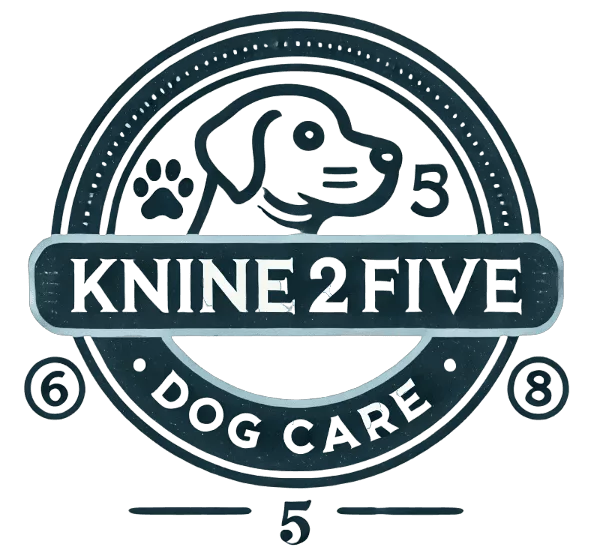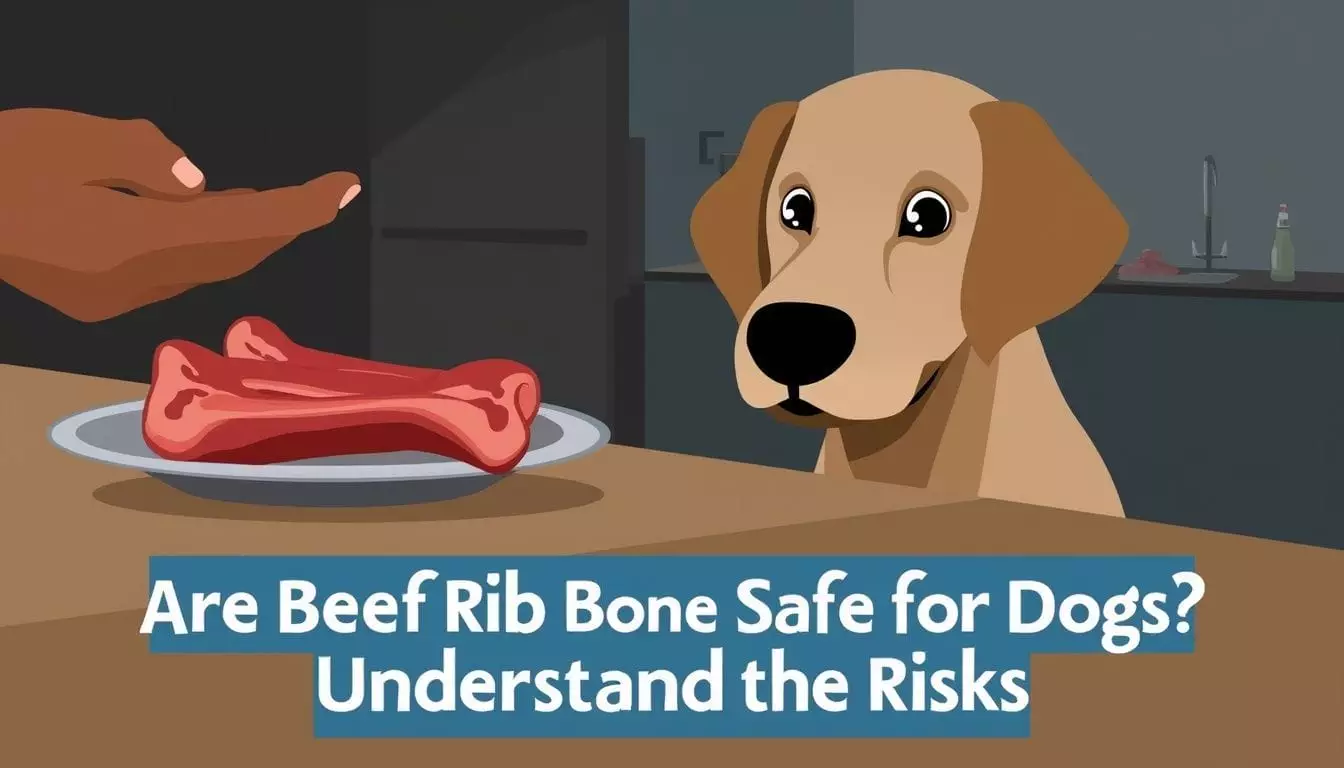Are beef rib bones safe for dogs? No. Vet experts warn against giving dogs any type of bone. Both cooked and raw bones can splinter, causing serious health risks. 1 These include choking, internal injuries, and blockages in the digestive tract.
Your dog’s safety comes first.
As experienced veterinarians and pet care professionals, we’ve seen the dangers of rib bones firsthand. Bone fragments can lodge in a dog’s throat or intestines, often requiring emergency surgery.
We’ll guide you through safer chew options to keep your furry friend happy and healthy. Read on to protect your pup from hidden bone hazards. Certain dog breed characteristics can make them more prone to choking or dental issues when they chew on bones. Large, powerful breeds may be more likely to break or splinter bones, leading to potential choking hazards. Similarly, dogs with flat faces, such as pugs or bulldogs, may have a harder time chewing bones and can easily injure their mouths. It’s important to consider these factors when choosing chew options for your specific pup. Additionally, opting for safer alternatives like specially designed chew toys or softer treats can significantly reduce the risk of injury. Always observe your dog’s chewing habits and consult with your veterinarian if you’re unsure about what is best for them. By understanding your dog’s needs and characteristics, much like observing coyote track characteristics in mud, you can make informed decisions that promote their well-being.
Key Takeaways
- Beef rib bones are not safe for dogs. Both raw and cooked bones can splinter and cause harm.
- Rib bones can lead to choking, broken teeth, mouth injuries, and digestive issues in dogs.
- Vets recommend safer chew options like rubber toys, dental chews, bully sticks, and frozen carrots.
- Always supervise your dog when they chew on any treat or toy to prevent accidents.
- If your dog chokes on a bone, stay calm, try to remove it if visible, and seek vet help right away.
Assessing the Safety of Beef Rib Bones for Dogs
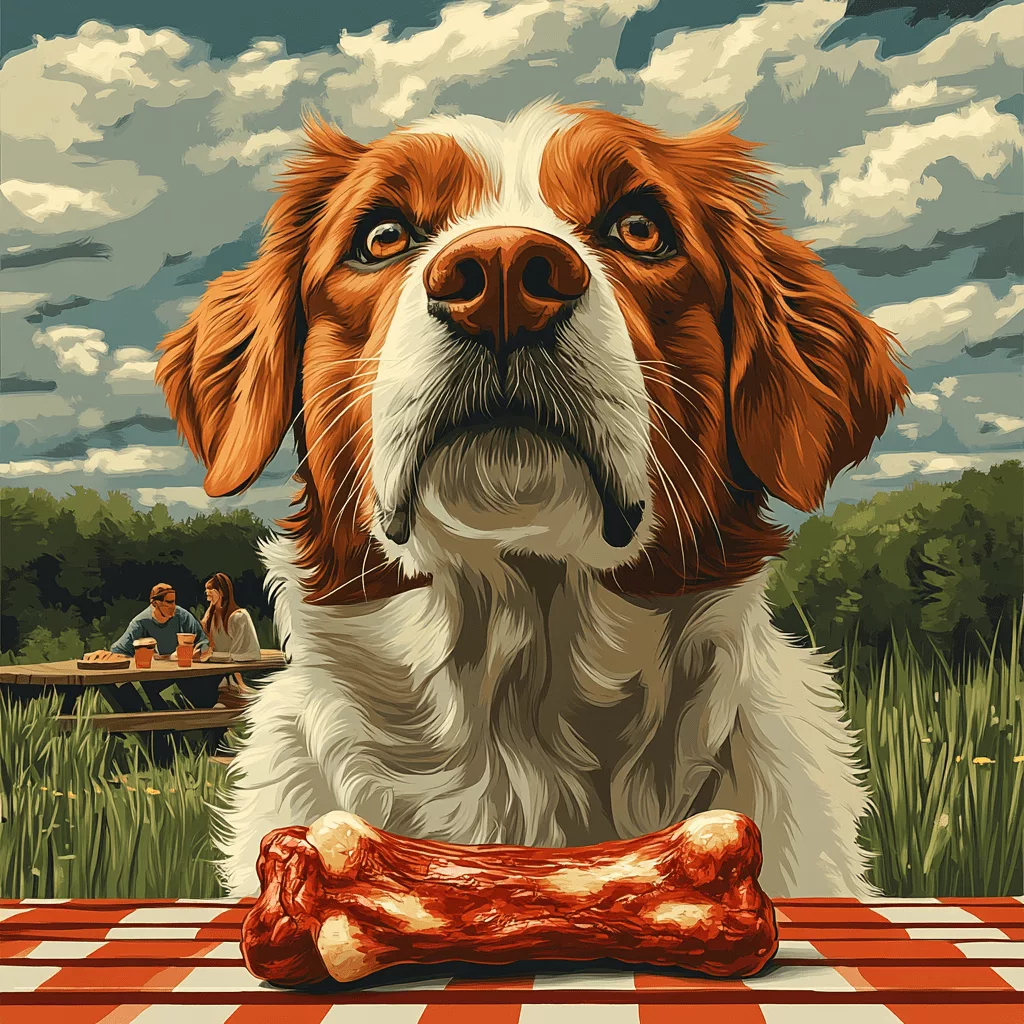
Beef rib bones can be risky for dogs. You need to know the pros and cons before giving them to your pet. On the pro side, beef rib bones can provide essential nutrients and minerals for your dog, as well as helping to clean their teeth and strengthen their jaw muscles. However, on the con side, beef rib bones can splinter and cause choking, obstruct the digestive tract, or even cause dental damage. It’s important to weigh these risks carefully, especially if you have a large breed like a Great Dane puppy. Additionally, you should also consider the potential veterinary bills and great dane puppy cost associated with any potential health issues that could arise from giving your pet beef rib bones.
Understanding the Risks: Can Dogs Eat Rib Bones Safely?
Rib bones pose serious risks to dogs. Vets warn against giving them as treats. Both raw and cooked bones can splinter, causing harm. These sharp pieces may block or tear the gut. 2 They can also break teeth or hurt the mouth and throat.
Raw bones are less dangerous than cooked ones. But they still carry risks. Choking is a major concern with any bone. Safe chewing options exist. Rubber toys or dental chews offer better choices.
Next, let’s explore the pros and cons of feeding rib bones to dogs.
The Pros and Cons of Feeding Rib Bones to Canines
Feeding your dogs rib bones has both advantages and drawbacks. 3 Consider these points before offering this treat to your canine companion:
| Pros | Cons |
| Provides mental stimulation Helps clean teeth Satisfies chewing instinct Contains nutrients | Risk of choking Can cause broken teeth Possible mouth injuries Potential for digestive issues Splinters may harm GI tract |
Raw beef rib bones are safer than cooked ones due to their softer texture. Always supervise your dog while they chew on bones to ensure safety. Next, let’s explore alternative chewing options for your furry friend.
Alternative Chewing Options to Beef Rib Bones
Now that we’ve looked at the pros and cons of rib bones, let’s explore safer options for your dog. These choices give your pup the joy of chewing without the risks.
- Rubber chew toys: Durable and safe, these toys come in various shapes and sizes. They clean teeth and massage gums without splintering.
- Dental chews: Made to promote oral health, these treats reduce plaque and freshen breath. Choose ones approved by vets for best results.
- Bully sticks: These natural chews are made from beef muscle. They’re long-lasting and fully digestible, unlike bones.
- Frozen carrots: A healthy, low-calorie option that soothes teething pups. They’re crunchy and packed with vitamins.
- Kong toys: Fill these with treats or peanut butter for hours of fun. They’re tough and keep dogs busy.
- Nylon bones: These synthetic chews are tough and last long. Pick the right size for your dog to avoid choking.
- Antlers: Natural and long-lasting, antlers are rich in minerals. Always supervise your dog when chewing these.
- Rope toys: Great for tugging and chewing, they also floss teeth. Replace them when they start to fray.
Identifying Bad Bone Habits: When Dogs Eat Rib Bones

Dogs can develop bad habits when eating rib bones. These habits may lead to health risks and behavioral issues.
Behavioral Concerns with Rib Bones as Treats
Rib bones can spark bad habits in your pup. Your dog might start to crave these beef bones over safer toys. This can lead to pushy or even mean behavior when bones are around. Some dogs get too excited about rib bones, which can make them anxious or hyper.
You need to watch your dog closely with rib bones. Put them away after meals so your pet doesn’t dig them out of the trash. This helps stop problem chewing and keeps your dog calm. Stick to safe chew toys instead of rib bones to avoid these issues.
Dietary Implications of Dogs Consuming Rib Bones
Rib bones can harm your dog’s health. They may cause choking or damage teeth. 5 Raw bones are softer than cooked ones, but still risky. Vets warn against giving dogs any type of rib bone. These treats can splinter and hurt your pet’s mouth or gut.
Bones offer little nutrition for dogs. They can block the digestive tract and lead to serious issues. Your pup might need surgery if a bone gets stuck. Safe chew toys are better for dental health.
Ask your vet about proper treats that won’t put your dog in danger. Always watch your pet with any chew item.
Types of Bones and Their Impact on Canine Health
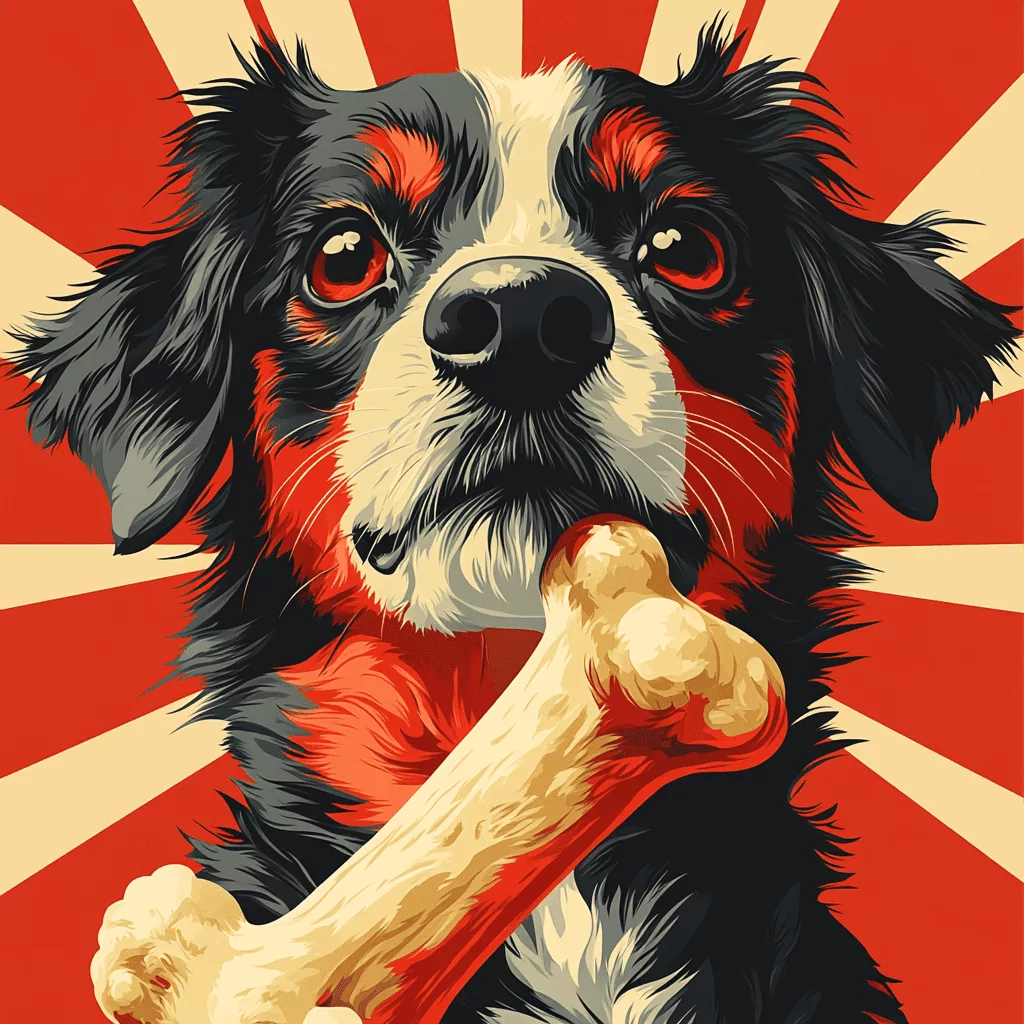
Different bones affect dogs in various ways. Some can help clean teeth, while others might splinter and cause harm.
Types of Bones from Different Animals
Dogs can eat bones from different animals, but there are some things to keep in mind.
Cooked chicken bones are generally safe for dogs. They are small and brittle, which makes them less likely to splinter. Cooked pork rib bones can be dangerous because they are more likely to splinter than chicken bones. Cooked beef bones can also be dangerous, especially if they are large or cooked.
Always supervise your dog when they are eating bones. If you have any concerns, talk to your veterinarian.
The Role of Nutrition in Bone Selection
Proper nutrition plays a key role in picking safe bones for your dog. A well-balanced diet helps keep your pup’s teeth and bones strong. This makes chewing safer. Good nutrition also aids digestion, which is crucial when your dog eats bones.
Choose bones that match your dog’s size and chewing habits. Smaller dogs need smaller bones. Active chewers need tougher bones. Always pick bones from trusted sources to avoid harmful chemicals or bacteria.
A Comprehensive Guide to Bone Safety for Dog Owners
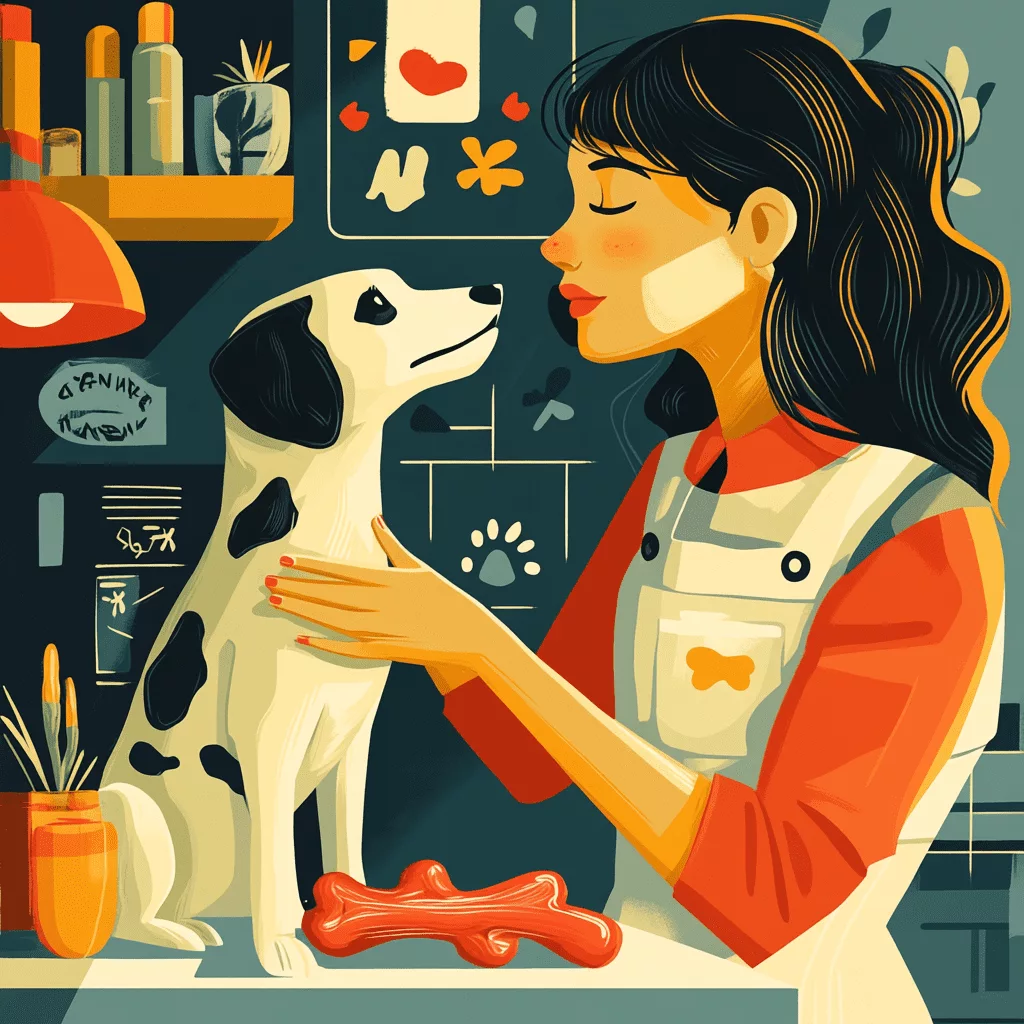
Keep your dog safe when chewing bones. Learn how to watch them and what to do if they choke.
Best Practices for Supervision While Dogs Chew on Bones
Supervising your dog while chewing bones is crucial for safety. 4 Follow these practices to ensure a safe chewing experience:
- Stay close: Always watch your dog when they chew bones. This lets you spot any issues quickly.
- Time limits: Set a 10 to 15 minute limit for each chewing session. Long sessions increase risks.
- Size matters: Choose bones that match your dog’s size. Too small bones can be swallowed whole.
- Check for wear: Look at the bone often. Remove it if it gets too small or starts to splinter.
- One at a time: Give only one bone per dog. This stops fights and lets you watch each dog closely.
- No distractions: Keep the area quiet. Loud noises might startle your dog, causing them to gulp the bone.
- Fresh water: Have water nearby. It helps wash down small bits of bone.
- Know the signs: Learn choking signs like gagging or pawing at the mouth. Act fast if you see these.
- Proper storage: Put bones away after chewing time. This stops your dog from getting beef bones when you’re not around.
- Regular checks: Feel your dog’s mouth and gums after chewing. Look for cuts or stuck bone bits.
Emergency Response When a Dog Chokes on a Bone
Knowing how to act fast can save your dog’s life. Here’s what to do if a bone cause your dog to choke:
- Stay calm and assess the situation
- Check if your dog can breathe
- Try to remove the bone if visible
- Perform the Heimlich maneuver for dogs
- Rush to the vet if choking persists
- Watch for signs after the incident
- Follow up with your vet
The Risks of Rib Bones: Veterinarian Recommendations
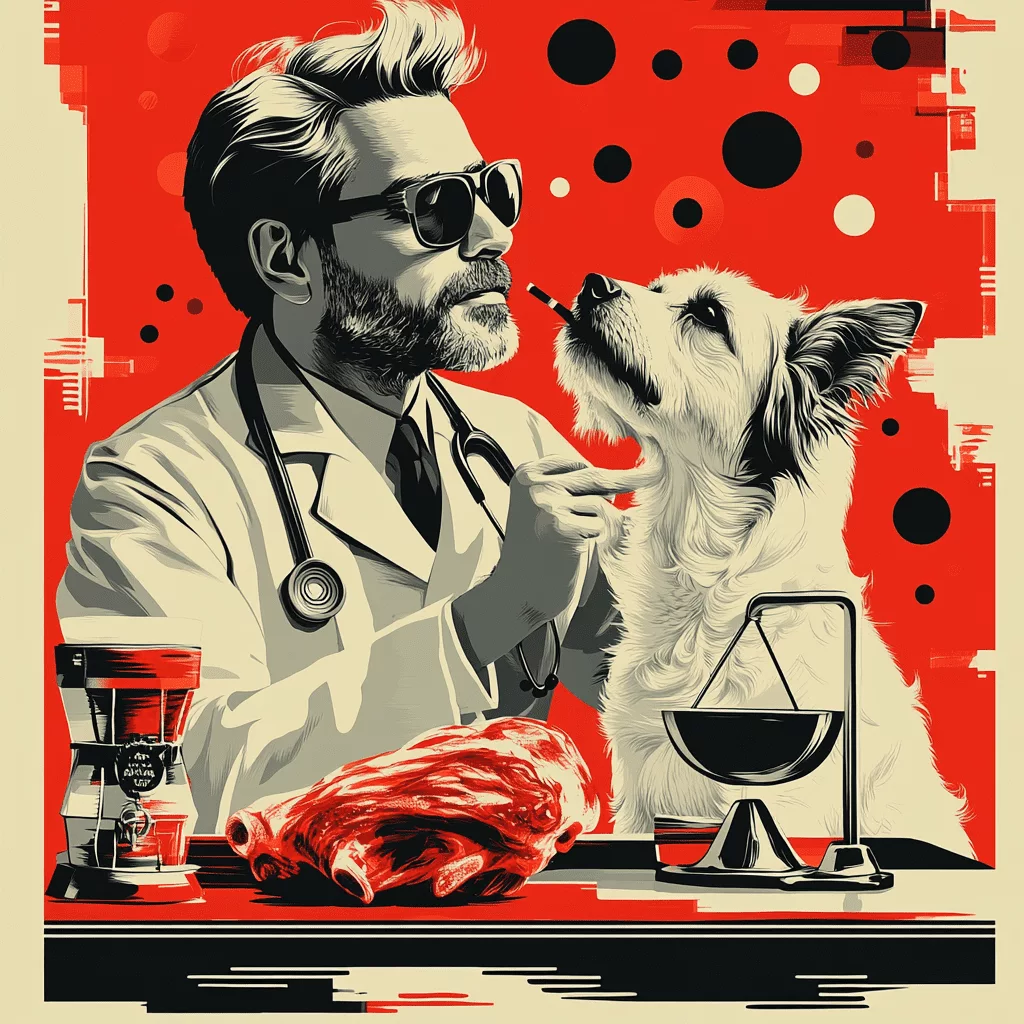
Vets warn against giving dogs rib bones. These bones can splinter and hurt your dog’s mouth, throat, or gut.
Expert Opinions on Feeding Dogs Rib Bones
Experts strongly advise against giving dogs rib bones. Most vets agree that these bones pose serious health risks. Cooked or raw, rib bones can splinter easily. These sharp pieces may harm your dog’s mouth, throat, or gut.
Choking is a major concern with rib bones. They can also break teeth or cause internal injuries. 6 Some vets suggest raw bones are safer than cooked ones. But even raw bones carry risks.
Many pros recommend bone alternatives instead. Chew toys or dental treats offer safer options for your pup’s chewing needs.
Safe Treat Alternatives Endorsed by Animal Health Professionals
Vets suggest safer chew options for dogs. 7 Here are vet-approved treats that won’t harm your pup:
- Dental chews: These clean teeth and freshen breath. Pick size-appropriate chews for your dog.
- Rubber toys: Durable Kong toys can be stuffed with treats. They provide mental stimulation and satisfy chewing urges.
- Bully sticks: Made from beef muscle, these long-lasting chews are digestible. Supervise use to prevent choking.
- Carrots: Crunchy and low-calorie, carrots are great for teething puppies. They’re packed with vitamins and fiber.
- Frozen fruits: Offer small pieces of frozen apple or banana. These cool treats soothe sore gums.
- Rawhide alternatives: Look for options made from sweet potato or fish skin. They’re easier to digest than rawhide.
- Nylon bones: These tough chews last long and come in flavors dogs love. Replace them when they get small enough to swallow.
- Puzzle toys: Fill these with kibble or treats. They keep dogs busy and reward problem-solving skills.
Conclusion
Beef rib bones pose real risks to dogs. Their broken shards can splinter and hurt your pet’s mouth or your dog’s gastrointestinal tract. Cooked bones are even more dangerous. Vets warn against giving any rib bones to dogs. Safe chew toys offer better options for your furry friend. Always consult a vet if your dog need help.
Keep your dog healthy and happy by avoiding rib bones.
FAQs
1. Are beef rib bones safe for dogs?
Beef rib bones can be risky for dogs. Raw bones are less likely to splinter, but cooked ones can break into sharp pieces. Always watch your pup when they chew bones.
2. What size beef rib bones are best for dogs?
The right size depends on your dog. Bigger dogs can handle 9-10 inch bones, while smaller ones need 3-4 inch bones. Make sure the bone is bigger than your dog’s mouth to avoid choking.
3. Can dogs eat cooked rib bones?
No, cooked rib bones are not safe. They can splinter and hurt your dog’s mouth or gut. Stick to raw bones or other chew treats made for dogs.
4. What are the risks of giving dogs beef rib bones?
Risks include choking, broken teeth, and gut problems. Bone bits can get stuck and cause pain or blockages. If your dog seems sick after eating bones, call the vet right away.
5. Do beef rib bones have any benefits for dogs?
Yes, chewing on raw beef rib bones can help clean teeth and fight gum disease. They also give dogs iron and other good stuff. But always check with your vet first.
6. How often can I give my dog beef rib bones?
Don’t give bones too often. They’re not a full meal. Use them as a treat now and then. Keep an eye on your dog’s weight and health when you give extra snacks like bones.
References
- ^ https://animalemergencyservice.com.au/blog/cooked-bones-dangerous-for-dogs/
- ^ https://www.akc.org/expert-advice/nutrition/can-dogs-eat-bones/
- ^ https://kb.rspca.org.au/knowledge-base/should-i-feed-bones-to-my-dog/
- ^ https://themuttyprofessor.co.uk/blog/guide-to-safe-chewing-for-your-dog/
- ^ https://www.akc.org/expert-advice/nutrition/choosing-edible-chews-for-dogs/
